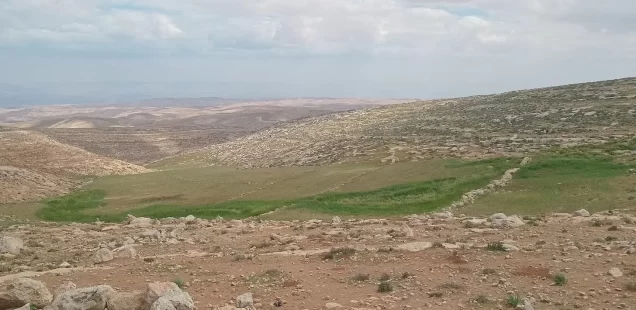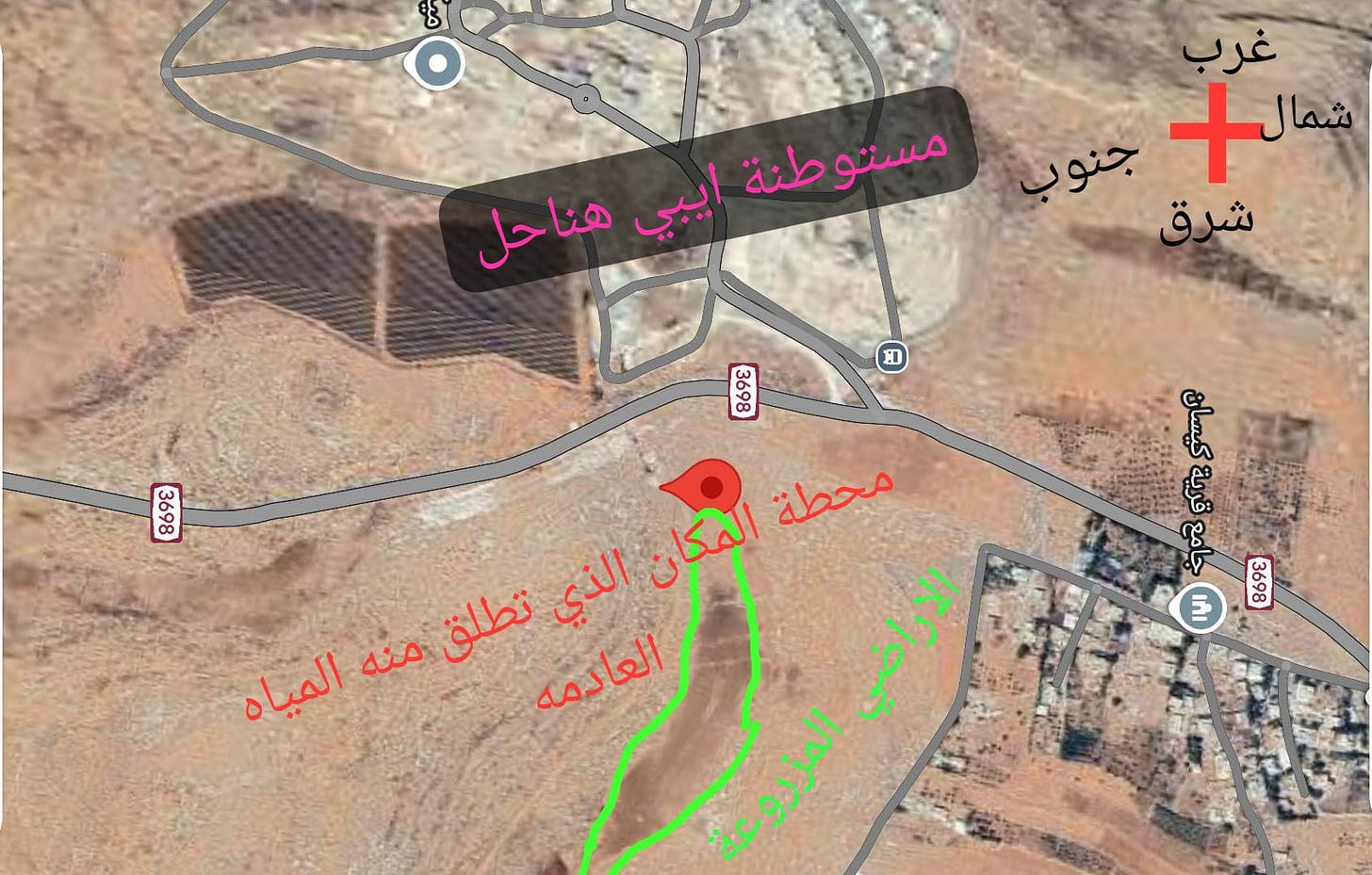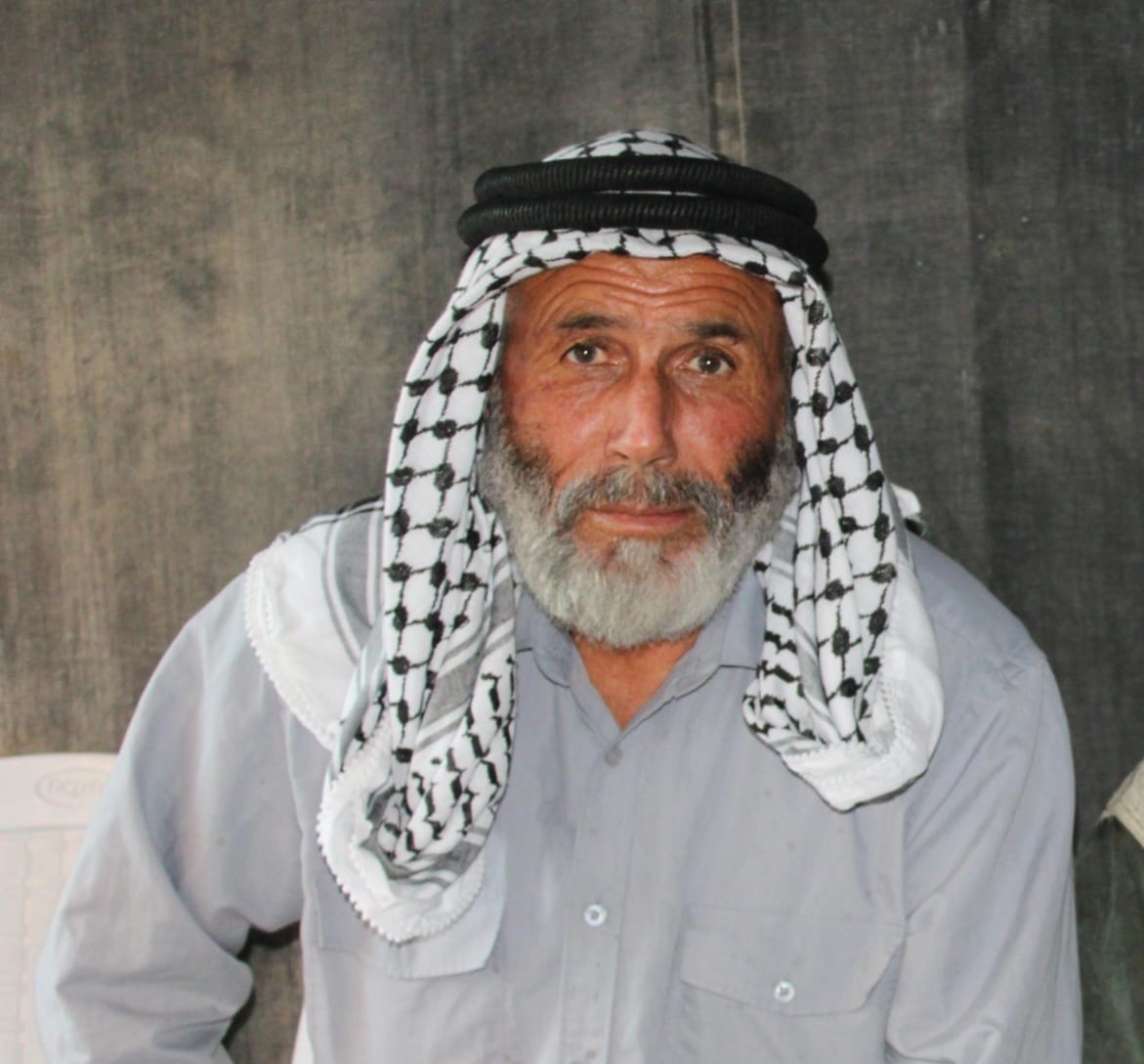
“Poisoning ‘the Holy Land.’”
I met Adnan al–Abayyat last November in Kisan, his rural village in the Bethlehem Governorate. Kisan is 11 km southeast of the city of Bethlehem—as the indigenous hooded crow flies. It is a rather longer distance—27.5 km—on the dangerous and circuitous roads Palestinians are required to travel.
For many years now, Adnan has documented settler and I.O.F. violence in his community, creating a large archive of photographic and video evidence—this at great personal risk. He monitors the surrounding agriculture and grazing land that has belonged to the families of Kisan for centuries, driving to remote locations where attacks are under way. News of these travel quickly on WhatsApp and by way of social media. Last year, in an attempt to stop his activity, the I.O.F., or possibly settlers wearing I.O.F. uniforms—at this point there is no meaningful distinction—stole his car.
Palestinians are ever resourceful, and an anonymous Hebron non-profit organization quickly replace Adnan’s car with a serviceable used one. They also provided him with a telephoto lens. Now Adnan can maintain a reasonable distance—and what a ludicrous concept that is in Occupied Palestine—as he records the ceaseless and always escalating violence. I will not use the word “safe” because that is equally meaningless.
■
On Saturday morning, 12 April, my phone began dinging, signaling arriving texts. My body went momentarily rigid as if preparing for a blow. This has now become an automatic response to any sequence of rapidly incoming texts. The rapid-fire pings could mean only one thing: Someone I knew and cared about was texting from the West Bank. It was Adnan.
The first text to arrive was the video below. It showed a foul-looking sludge flowing through an otherwise lovely pasture. Settlers near his village were dumping toxic waste onto neighboring Palestinian fields that belong to his uncle, Saleh al–Abayyat.
The second image to land was an aerial map identifying the location of the settlement and the area of environmental impact. Six more photos arrived in quick succession.

The dark gray panel at the top with pink Arabic lettering identifies the illegal Jewish outpost and reads, “Ibei Hanachal settlement.” The red symbol below the settlement marks the source of pollution. The text reads: “The station where the sewer water is coming from.” The green line encircles the area where waste water is being dumped and the accompany Arabic says: “The fields,” or “the planted land.” Kisan can be seen in the lower right corner.
In a subsequent text Adnan explained:
The cultivated lands of citizen Saleh al–Abayyat were damaged by the waste water released by the Occupation from the settlement of Ibei Hanachel. His land, which was planted with wheat and barley, became a swamp due to that water. The Occupation turned his land into a dump to dispose of their waste water.
The dumping of raw sewage began some three months ago. More recently, as Adnan reported, “it has become very strong, flowing over a large area and destroying and polluting the agricultural crops” and grazing land. As of this reporting, no animals have as yet been sickened.

Without laboratory analysis, it is impossible to know the specific toxins being dumped onto al–Abayyat’s land. Almost certainly the sludge contains household chemicals in addition to raw sewage. Because Ibie Hanachal is a farming outpost—as are many illegal outposts and settlements—agrochemicals and animal waste may very well be part of the toxic mix. Indeed, where else would these pollutants be dumped?
■
I Googled Ibei Hanachal and was surprised to discover that the A.I. description was more objective and accurate than anything one might read in the corporate Zionist-affiliated press.
Ibei HaNahal [sic] is an Israeli settlement outpost in the Gush Etzion settlement block in the West Bank, founded in 1999. It’s located southeast of Bethlehem. While initially established as an ecovillage, it’s considered illegal by international law and even under Israeli law, as it was built without proper permits.
Read that again and consider all it reveals. To point out the obvious: Even with “proper permits” the outpost would still be illegal. More perverse yet: For something approaching three months a Jewish “ecovillage” has been dumping increasing amounts of toxic waste on farmland.
Ibei Hanachal is an example of the Israeli practice of using outposts to expedite and expand illegal settlements throughout the West Bank. A 2021 report published by The Foundation for Middle East Peace highlighted this specific case:
Ibei Hanachal was established illegally by settlers in 1999, but was granted retroactive approval as a neighborhood of the Ma’ale Amos settlement by the Israeli government in August 2019. Declaring illegal outposts to be neighborhoods of settlements—even outposts that are non-contiguous with the allegedly parent settlement, as is the case with Ibei Hanachal—is one of the legal mechanisms that Israel has found to retroactively “legalize” illegal outposts. In this way, Israel has not only been “legalizing” construction by settlers that violates Israel law, but has in effect been establishing brand new settlements—like Ibei Hanachal.
In Ibei Hanachal’s case, it comes down to this: Pretend environmentalists—pretend environmentalists pretending to be indigenous—are poisoning the land as a coldly calculated strategy of environmental terrorism to drive Palestinians off of the land.
And this is not just any land but land Zionist Jews claim was given to them by God—holy land according to their own twisted mythologies. What they intend do with the now toxic land after stealing it one can only imagine.
Perverse is indeed the word. I can think of nothing that more clearly exposes the complete lie of the Zionist project.
This particular Zionist perversion is all too common. Industrial and residential settlements routinely dump their waste onto Palestinian land, as I reported in “Scars on the land,” published in February in Winter Wheat and The Floutist.
I share this story on the situation near Kisan not because it is unusual, or even extreme, but to make readers aware of the routinization of environmental terrorism by the Zionist regime. And also with what diligence illegal Jewish settlers—most of them from Europe and the United States—work to steal the land of Palestine and cleanse it of its true indigenous inhabitants.
Imagine the consciousness, the intellectual, moral, and spiritual vacuity of such a people. Image scheming and planning how best to intimidate, bully, and brutalize another people so that you can take what is not yours. Imagine: And you then understand the full flowering of Zionism in the genocide in Gaza.
Published simultaneously in West Bank Alerts and Winter Wheat.

